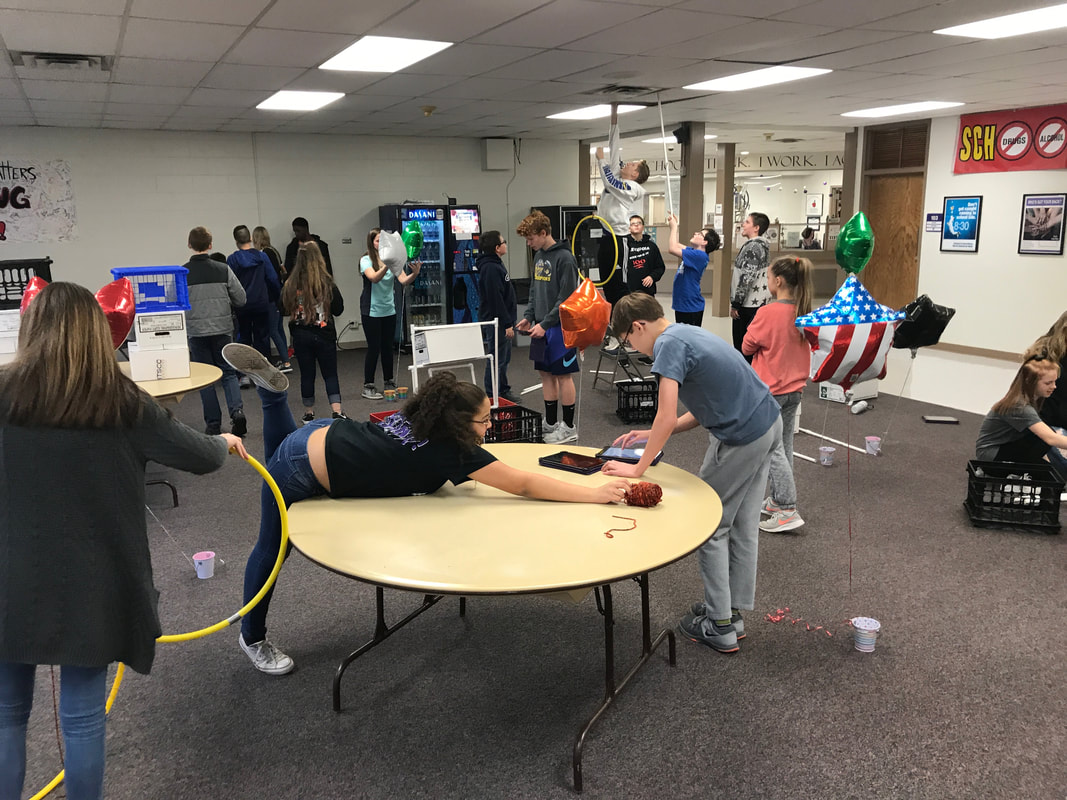|
All right. I had a pretty great lesson last week and I'm proud of it; however, no matter how fabulous I thought it was and no matter how much work I did to organize it, it did not end like I thought it would. Here's the basic outline: Objectives: TDA--students will work to hone skills associated with Text Dependent Analysis using differentiated reading groups and grade appropriate reading levels by employing the Readworks.org software. I used the MAP data to break the students into four reading groups. These groups are summed up here: By creating these groups in Schoology, passages and questions in Readworks can be tailored and assigned privately. Each student only sees what he/she is working on. Students are allowed to redo tests until they have a minimum of 80 percent. After students have this review under their belts, they are assigned a version of the STATE TEST I recreated in Schoology. They will also be able to take this test until they have the score they desire. #iPadAcademy Note: This level of differentiation would be extremely difficult maintain without the private group and grading features of Schoology. Using the two programs together, I can reach all levels in my classroom and remain confidential about levels and abilities. The grades and rate of completion for this assignment are NOT in an acceptable range for my classroom. One of the major issues is that in the ReadWorks software, a student has to press submit on his/her/their test in order to have the response count. Even though I taught this concept and how to make sure it was turned in on two separate days (Thursday and Friday at the beginning of class), I still had many students fail to hit the submit button. This means that the functionality to grade their written responses was inoperable.
So, now I'm revising things to head into the next week. We will be forced to retry this assignment next week just to get the work submitted. It's going to eat into our Text Dependent Analysis essay lecture next week, but that's okay (especially since the curriculum for this quarter is very fluid). I will post my corrections to this lesson as soon as I figure out what they are :-). Thanks for reading.
3 Comments
I will admit it; this lesson is not for the faint of heart. As an educator, I'm used to a certain level of chaos in my classroom. This level of chaos was very close to my limit, but as Kami and I skated close to that edge, I saw an excitement and engagement level in my students that was both refreshing and exhilarating. The lesson plan was simple enough. After playing with the drones over the weekend with my sons, I felt I had an okay handle on their functioning. Specifically, I could turn them off and on and generally make them function. Then, on Monday, we started with this lesson. Below is a simplified outline. If you click on the picture of the chart, it will take you to the Google Document with hot linked resources that I used in the lesson.  Photograph by Melissa Hansen Photograph by Melissa Hansen The lesson was whole-heartedly enjoyable and I was amazed by how many objectives we were able to hit with our discussions and our experiences. The ones that namely stood out were: LA 8.1.6.i Construct and/or answer literal, inferential, critical, and interpretive questions and support answers with explicit evidence from the text or additional sources LA 8.1.6.j Apply knowledge of organizational patterns to comprehend informational text (e.g., sequence/chronological, description, spatial, cause and effect, compare/contrast, fact/opinion, proposition/support). Most remarkably every single objective for LA 8.3 and LA 8.4--(Communication and Media Literary) was repeatedly woven into every aspect of the lesson. What would I change? Extra batteries for the drones is the easiest fix to the limited time the flyers will run. For our Parrot drones, we were getting about 10 minutes from fully charged to won't fly anymore. They needed at least 20--30 minutes on charge to restart the cycle. Two sets of batteries would solve this problem. The other thing is that I would work harder to understand the battery aspect of the project before getting in to the classroom. That was a bit of a crash and burn as on Tuesday, our drones failed to charge Monday night (the cart was not plugged into the wall--ops) and one of the drone's top time was 50 seconds (for two classes). I solved this by combining groups to work together on single drones. It was not ideal, but it was effective as everyone could still do their jobs in turns. I was astounded by their teamwork and their ability to work in both their group and combined groups. The dynamics were powerful and interesting to watch. The regular classes were all self-chosen and group decided. I was fascinated to watch which kids waned which roles and who stepped up to lead the groups. And here I need to have a BIG shout out to the awesomely amazing Mallory Peterson @malpete1010 our H.A.L. educator extraordinaire. She created the incredibly gorgeous safety presentation linked below. I'd also love to point out that Phillip Loomis @TeachLoomis helped dropping off equipment on the fly when we had trouble with the batteries and needed a backup plan! What a rock star team! Finally, I need to thank Aaron Maurer @coffeechugbooks. Aaron is an Instructional Coach at Bettendorf Middle School. Aaron's article "The Top Five Unexpected Benefits of Robotics in the Classroom" from 2016 points out a great group of benefits that the students were able to infer and pinpoint due to the lesson. Thanks, Mr. Maurer!! This had to have been one of my most successful projects in recent memory. |
Archives
April 2024
Categories |
 RSS Feed
RSS Feed








